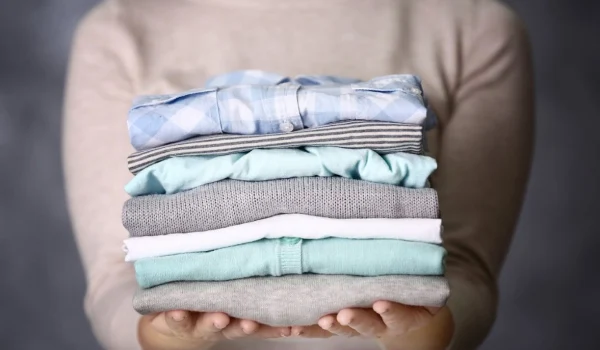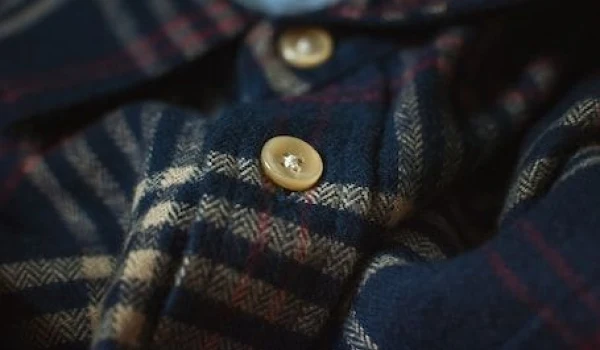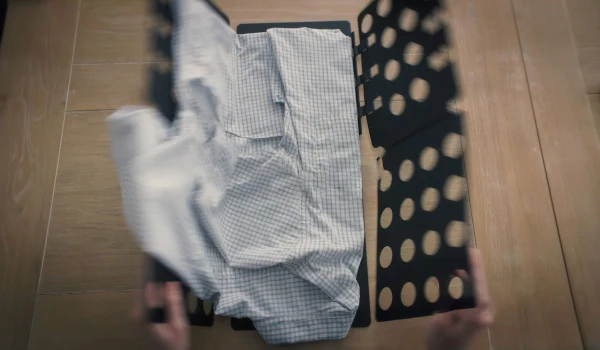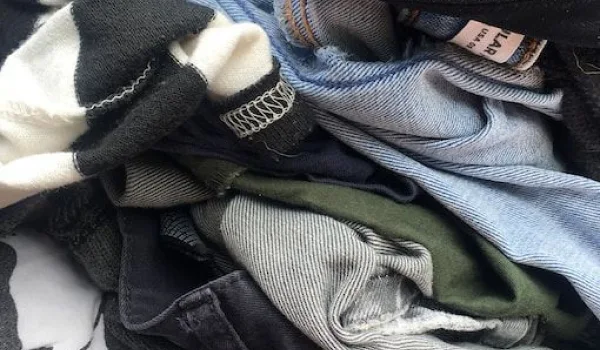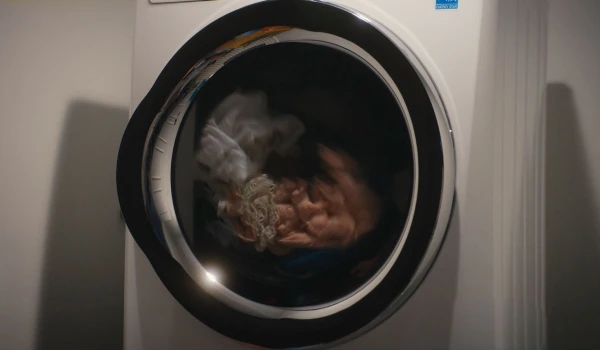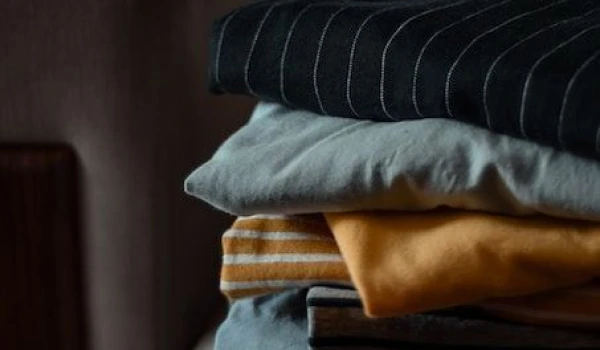Care
Clothing care tips to make your wardrobe last

Introduction
As the warmer months approach, it's time to think about storing your winter clothes. Proper storage is essential to maintain the longevity of your garments and ensure they’re in pristine condition when winter rolls around again. Without proper care, your wool coats, sweaters, and winter gear can be susceptible to damage from moths, moisture, and improper storage methods. In this guide, we’ll cover everything you need to know about preparing your winter wardrobe for storage, along with the best practices to keep it fresh and ready for next season.
How To Prepare Your Winter Clothing for Storage
Before you start storing your winter clothes, taking the time to prepare them properly is crucial. This will not only help protect your garments but also ensure they are in great condition when you need them again.
Clean the Storage Spots
Before storing your winter clothes, ensure that the storage area is clean and dry. Dust, moisture, and dirt can all contribute to the deterioration of your garments. Whether you're using a closet, storage bin, or under-bed storage, make sure to vacuum the area and wipe down surfaces to eliminate any lingering dust or grime.
Repair Any Damages
Inspect your winter clothing for any damages that need repairing before storage. Small tears, loose buttons, or frayed edges can worsen over time, so it’s best to address these issues before packing away your clothes. This is especially important for items like wool coats and sweaters, which can unravel if not properly cared for. Additionally, dry clean any garments that require it, as stains left untreated can set in and become permanent during storage.
Donate Clothes You Didn’t Wear
If there are items in your winter wardrobe that didn’t see any wear during the season, consider donating them. This not only frees up space but also ensures your storage area isn't overcrowded, which can lead to wrinkles and damage to your clothes. Plus, donating gently used items is a great way to give back to the community.

Which Are the Best Ways to Store Winter Clothes?
Choosing the right storage method is key to preserving your winter clothes. Depending on the fabric, space, and climate, different methods may be more suitable for certain garments.
Garment Bags
For delicate items such as wool coats or formal wear, garment bags are an excellent choice. They help protect your clothes from dust and moths while allowing the fabric to breathe. Opt for cotton or linen garment bags instead of plastic, as the latter can trap moisture and lead to mildew or yellowing.
Clear Plastic Bins with Lids
Clear plastic bins are ideal for storing bulky items like sweaters, scarves, and hats. These bins are sturdy, stackable, and provide a clear view of what's inside, making it easy to find items when needed. Be sure to use airtight lids to keep out moisture and pests. Add silica gel packets to the bins to absorb any excess moisture and prevent mildew growth.
Vacuum Seal Bags
Vacuum seal bags are perfect for maximizing storage space, especially if you’re working with limited room. These bags compress your garments by removing air, reducing their size significantly. However, use vacuum seal bags with caution. Over-compressing can cause some fabrics, like wool or down, to lose their shape or insulating properties. Reserve these bags for less delicate items like synthetic winter gear or extra blankets.

10 Tips for Storing Winter Clothes
Storing your winter clothes properly can make a big difference in their longevity and appearance. Here are 10 essential tips to keep your wardrobe in top shape:
1. Organize by Category
Group your clothing by category—coats, sweaters, accessories—before storing. This will make it easier to locate specific items when winter returns and ensure that everything is stored appropriately.
2. Use Natural Repellents
Moths can be a nightmare for wool and cashmere items. Use natural repellents like cedar blocks or lavender sachets in your storage bins and garment bags. These not only keep pests away but also add a pleasant scent to your stored clothes.
3. Implement a Rotation System for Seasonal Wear
If you have items that you rotate seasonally, such as coats or boots, make sure to store them in an accessible spot. Implementing a rotation system ensures that the most frequently used items are easy to access, while those worn less often are stored more securely.
4. Select a Storage Location
Choose a cool, dry place for storage. Avoid areas with extreme temperature fluctuations or high humidity, such as basements or attics, as these conditions can damage fabrics and promote mold growth. A closet or under-bed storage in a climate-controlled room is ideal.
5. Separate Clothing Between Items To Be Folded vs. Hung
Not all garments should be stored in the same way. Fold bulky items like sweaters and place them in storage bins to prevent stretching. On the other hand, hang structured pieces like coats in garment bags to maintain their shape. Use padded or wooden hangers to avoid shoulder dents in heavier garments.
6. Label the Bins
Label each storage bin or garment bag with its contents. This simple step will save you time when you’re searching for specific items and help keep your storage organized. Consider adding a brief description of what’s inside, such as “Wool Coats” or “Winter Accessories.”
7. Keep Stored Clothes Smelling Fresh
To maintain a fresh scent in your stored clothes, consider adding scented sachets, dryer sheets, or a small bar of scented soap to your bins or garment bags. This will help counteract any musty odors that can develop over time.
8. Avoid Overpacking
Overpacking storage bins or garment bags can lead to wrinkles, creases, and even damage to delicate fabrics. Allow your clothes some breathing room to maintain their shape and quality.
9. Air Out Clothes Periodically
If your clothes will be stored for several months, consider airing them out periodically to prevent any musty odors or moisture buildup. Simply open the storage bins or garment bags and let your clothes breathe for a few hours in a dry, ventilated area.
10. Dry Clean Delicate Items Before Storage
For items like wool coats or cashmere sweaters, it's important to dry clean them before storage. This removes any stains, dirt, or oils that could attract pests or cause discoloration during storage. Make sure the garments are completely dry before packing them away.

Maintain Your Winter Clothes in Perfect Condition with Rinse
Storing your winter clothes properly is essential, but ensuring they are in perfect condition before and after storage is just as important. That’s where Rinse comes in. With our professional laundry and dry cleaning services, you can trust us to keep your winter wardrobe in pristine condition.
Rinse offers convenient door-to-door laundry and dry cleaning service in 10 major metro areas, making it easy for you to have your winter clothes cleaned and preserved without any hassle. When it’s time to prepare for the next winter season, Rinse will have your coats, sweaters, and other winter gear ready to wear, as if they were just taken out of the closet for the first time.
For more tips on clothes storage and caring for your garments, check out our other articles on how to store clothes, how to organize your closet perfectly, and how to store your nostalgic linens.
Contact us at Rinse today to see our skill in action.

Have laundry or dry cleaning to do?
Rinse picks up, cleans and delivers 7 days a week. Amazingly awesome. Ridiculously simple.

Introduction
We've all faced it—clothing that smells musty or unpleasant despite not being "dirty" enough for a full wash. Constantly washing your clothes is not always the best solution, as it can wear down fabrics, fade colors, and use up time, water, and energy. Luckily, there are effective ways to remove odors from your clothes without having to toss them in the washing machine every time. In this article, we'll explore the root causes of these lingering odors and share practical tips to keep your garments smelling fresh without frequent washing.
What Causes Bad Smells?
Understanding the root cause of bad odors in your clothes is the first step to eliminating them effectively. Here are some common culprits:
Bacterial Growth
Bacteria thrive in moist environments, making your clothes a perfect breeding ground, especially after a sweaty workout. When sweat and oils from your skin accumulate on clothing, bacteria start to break down these substances, releasing foul-smelling byproducts. This bacterial growth is often the primary reason behind smelly gym clothes, making it difficult to remove odor without a thorough wash.
Sweat and Body Odor
Sweat itself is odorless, but when it mixes with the bacteria on your skin, it can lead to unpleasant smells. Certain fabrics, particularly synthetic materials, can trap sweat and body odor, causing persistent smells that linger even after airing the clothes out. This is why your favorite workout gear may start to develop a distinct, stubborn odor over time.
Mold and Mildew
Mold and mildew are other significant causes of musty smells in clothing. These fungi grow in damp, humid environments, making them a common issue for clothes that have been stored in a closet or left damp in the washing machine. Mold and mildew can produce a distinct, musty smell that is challenging to remove and can even lead to fabric damage if not addressed promptly.
Residual Odors from Washing
Ironically, the very process of washing your clothes can sometimes leave them smelling worse. If your washing machine isn’t cleaned regularly or if you use too much detergent, residual soap, fabric softener, or other build-ups can accumulate in your clothes, causing a lingering odor. Additionally, if clothes aren’t dried properly after washing, they can develop a musty smell.

10 Ways To Get Smell Out Of Clothes Without Washing
Washing clothes frequently isn’t always necessary. You can keep your garments smelling fresh with these ten practical tips, even when a full wash isn’t an option.
1. Air Outdoors
Fresh air works wonders for removing odors from clothes. Hanging your garments outside, preferably in a well-ventilated area, can help disperse unwanted smells. The natural breeze will help eliminate trapped odors and refresh your clothes, leaving them with a clean, outdoor scent.
2. Sun Exposure
The sun's ultraviolet (UV) rays have natural antibacterial properties that can kill odor-causing bacteria. Simply laying your clothes out in direct sunlight for a few hours can help eliminate musty smells and leave your garments smelling fresh. However, be cautious with colored clothing, as prolonged sun exposure can cause fading.
3. Using Fabric Fresheners
Fabric fresheners or odor removers are a quick and easy way to eliminate smells without washing. Spritzing your clothes with a fabric freshener or using a dry sheet can mask unpleasant odors, giving your garments a pleasant scent. Choose a product that’s safe for fabrics and free from harsh chemicals to prevent damage to your clothes.
4. Baking Soda
Baking soda is a versatile and natural odor-neutralizer. To remove odors, sprinkle baking soda directly onto the smelly areas of your clothing and let it sit for several hours or overnight. Shake off the excess, and your clothes should smell much fresher. This method is especially effective for removing musty smells from shoes, bags, or other items that can’t be easily washed.
5. Dryer Sheets
Dryer sheets are not just for the laundry—they can also freshen up your clothes without needing to wash them. Place a dryer sheet inside the garment or in a bag with the smelly item, and leave it for a few hours. The sheet will absorb and mask the odors, leaving your clothes smelling clean.
6. Vinegar Solution
White vinegar is a powerful odor remover that can neutralize even the most stubborn smells. Mix one part white vinegar with two parts water in a spray bottle, and lightly spritz the affected areas of your clothing. Allow it to air dry, and the vinegar smell will dissipate, taking the unwanted odors with it. This method works well for removing musty smells and is safe for most fabrics.
7. Essential Oils
Essential oils not only smell great but also have natural antibacterial properties that can help eliminate odors. Add a few drops of your favorite essential oil (like lavender or tea tree) to a spray bottle filled with water. Lightly mist your clothing, then hang it up to air dry. This method is a great way to keep your clothes smelling fresh without washing, and you can customize the scent to your liking.
8. Steam
Using a steamer or the steam function on your iron can help remove odors from clothes without washing. The heat from the steam kills odor-causing bacteria and refreshes your garments. Simply hold the steamer or iron close to the fabric (without touching it directly) and allow the steam to penetrate the fibers, releasing trapped odors.
9. Charcoal Bags
Activated charcoal is known for its odor-absorbing properties. Placing a small bag of activated charcoal in your closet or inside a sealed container with your smelly clothes can help remove unwanted odors over time. This method is especially useful for items like shoes or jackets that aren’t washed regularly.
10. Vodka Spray
Vodka isn't just for cocktails—it’s also a surprisingly effective odor remover. Fill a spray bottle with unflavored vodka and lightly mist your clothing. The alcohol will evaporate quickly, taking any lingering odors with it. This method is safe for most fabrics and is particularly useful for removing smoke or sweat odors.

Is It Wash Time Already? Discover Rinse
While these tips can help you keep your clothes smelling fresh between washes, it’s important to recognize when it’s time for a proper cleaning. Over time, buildup from sweat, body oils, and environmental pollutants can only be fully removed with a thorough wash. When that time comes, consider Rinse, a professional laundry service that ensures your garments are cleaned and cared for to the highest standard. With Rinse, you can trust that your clothes will be washed using the right detergents, dried properly to avoid musty smells, and returned to you fresh and clean. Visit our blog for more tips on laundry care and discover how Rinse can make laundry day a breeze.
Explore more:
- How to Get Mildew Smell Out of Clothes
- How to Get Smell Out of Towels
- How to Make Your Laundry Smell Good
- Baking Soda and Vinegar for Laundry
- How to Keep Your Athletic Gear Smelling Fresh
Contact us at Rinse today to see our skill in action.

Have laundry or dry cleaning to do?
Rinse picks up, cleans and delivers 7 days a week. Amazingly awesome. Ridiculously simple.

The Ultimate Guide to Washing Colored Clothes: Keep Your Wardrobe Vibrant
Maintaining the vibrancy of your colored clothes is essential for a wardrobe that feels fresh and timeless. Whether it's your favorite dark clothes or a bright, bold garment, proper care can make all the difference in keeping those hues vibrant and avoiding the dreaded fade. In this comprehensive guide, we'll walk you through the essential steps for washing colored clothes, share valuable tips for prolonging their life, and introduce you to how Rinse can help you maintain your wardrobe's brilliance with professional care.
Washing Colored Clothes: 4 Easy Steps
Washing colored clothes requires more than just tossing them in the machine. By following these four simple steps, you can ensure that your clothes maintain their color and quality for longer.
Step 1: Sort According to Color
The first step to preserving the color of your clothes is to sort them by color. Separate dark clothes from light-colored ones, and keep your white clothes in a completely separate load. Sorting is crucial because it prevents color bleeding, which can ruin your favorite garments. Dark clothes, like black jeans or navy shirts, can easily transfer dye onto lighter fabrics if washed together. Sorting ensures that each load is color-safe, reducing the risk of dye bleed and color transfer.
Step 2: Check the Labels
Before washing any garment, always check the care labels. These labels provide essential information on how to wash clothes, including the recommended water temperature and washing methods. For instance, many colored garments are best washed in cold water to prevent fading. Labels will also indicate whether an item should be washed with delicates or whether it can handle a normal wash cycle. Understanding these instructions helps you avoid shrinking, fading, and other issues that can arise from improper washing.
For a detailed guide on understanding clothing labels, read our article here.
Step 3: Turn New Colored Clothes Inside Out
New clothes often have excess dye that can bleed during the first few washes. To minimize the risk of color loss and surface abrasion, turn your new colored clothes inside out before washing. This simple step protects the exterior of the garment from direct contact with other items and the inside of the washing machine, helping to preserve the vibrancy of the color.
Step 4: Remove Clothes from the Machine Immediately
Once the wash cycle is complete, remove your clothes from the machine as soon as possible. Leaving them inside for too long can lead to wrinkles, mildew, and even color bleeding if the fabric is damp. This is especially important for dark clothes, as they are more prone to developing odors and losing their vibrancy if left wet for too long.

5 Tips to Wash Colored Clothes
Beyond the basics of washing, there are additional steps you can take to keep your colored clothes looking their best. Here are five expert tips to help you prolong the life of your garments:
-
Wash New Colored Clothes in Cold Water: Cold water is your best friend when it comes to preserving the dye in your clothes, especially for dark colors. Hot water can cause colors to fade more quickly, while cold water helps keep them vibrant. When washing mixed loads of colors, always opt for cold water.
-
Never Use Chlorine Bleach: Chlorine bleach is a harsh chemical that can strip the color from your clothes, leaving them dull and lifeless. Instead, use oxygen bleach or color-safe alternatives that are designed to brighten your garments without damaging the fabric. This ensures your clothes stay vibrant and fresh.
-
Use Fabric Protection: Consider using laundry detergents or fabric conditioners specifically designed for colored clothes. These products often contain ingredients that protect the fibers and prevent colors from fading. They also help to reduce pilling and keep fabrics feeling soft and new.
-
Hang Your Colored Clothes to Dry: Air drying is the gentlest method for drying clothes and helps prevent the heat from a dryer from damaging the fabric and causing colors to fade. Hang your clothes to dry in a shaded area to avoid direct sunlight, which can also cause colors to fade.
-
Avoid Overloading the Wash Machine: Overloading the washing machine can cause clothes to rub against each other excessively, leading to wear and tear. This friction can cause colors to fade more quickly. Give your clothes enough space to move freely in the wash, ensuring they are cleaned thoroughly and gently.

How to Remove Stains from Colored Clothes
Stains on colored clothes can be particularly challenging because you want to remove the stain without damaging the color. Here are some effective methods for tackling common stains on colored garments:
-
For Grease Stains: Apply a small amount of liquid laundry detergent directly to the stain and gently rub it in. Let it sit for a few minutes before washing. Use cold water to prevent setting the stain, as hot water can make it more difficult to remove.
-
For Ink Stains: Dab the stained area with rubbing alcohol using a clean cloth. Be sure to test this method on a hidden part of the fabric first to avoid any potential damage. Once the ink is lifted, wash the garment as usual.
-
For Food Stains: Treat food stains with a stain remover that is safe for colored clothes. Allow the remover to sit on the stain for at least 10 minutes before washing. For particularly stubborn stains, repeat the process until the stain is fully removed.
If you’re dealing with color bleeding, find more tips on how to get color bleed out of clothes.

Say Goodbye to Fading & Embrace Rinse for Colored Clothes Care
While proper washing techniques can significantly extend the life of your colored clothes, sometimes it's best to leave the care of your garments to professionals. Rinse offers top-notch laundry services that prioritize a high level of care of your clothes. Our experts know how to treat each garment to ensure it comes back looking as good as new.
Rinse uses advanced cleaning methods and premium laundry detergents designed to protect your clothes' colors while thoroughly cleaning them. Whether you need help with delicates, dark clothes, or stubborn stains, Rinse has you covered. Plus, with our convenient door-to-door service, you can enjoy the luxury of professional care without any of the hassle.
Say goodbye to fading and hello to a wardrobe that always looks its best. Try Rinse today and experience the difference in quality care for your colored clothes.
For more laundry tips and tricks, explore our guides on hot or cold water for stains and how to use bleach in laundry.
Contact us at Rinse today to see our skill in action.

Have laundry or dry cleaning to do?
Rinse picks up, cleans and delivers 7 days a week. Amazingly awesome. Ridiculously simple.

Introduction
Polyester has become one of the most prevalent fabrics in the fashion industry, appearing in everything from casual wear to high-performance athletic gear. Thanks to its affordability, durability, and versatility, polyester clothes have earned a permanent spot in our wardrobes. However, like any fabric, polyester requires proper care to maintain its quality and longevity. This article will guide you through the essentials of understanding polyester fabric, the best practices for washing polyester garments, and the optimal methods for drying them. Whether you’re a polyester enthusiast or just looking to extend the life of your polyester pieces, this guide is for you.
What Is Polyester?
Polyester is a synthetic fabric made from petroleum-based products, and its introduction in the 1940s revolutionized the textile industry. Unlike natural fibers such as cotton or wool, polyester fibers are strong, durable, and resistant to shrinking, stretching, and wrinkling. This resilience makes polyester a popular choice for a wide range of clothing, including sportswear, work uniforms, and casual attire.
Polyester is also known for its ability to hold vibrant colors, even after multiple washes. The fabric is often blended with other materials, such as cotton, to create garments that combine the best of both worlds—comfort and durability. Additionally, polyester's moisture-wicking properties make it a preferred material for activewear, helping to keep the wearer dry during physical activities.
The widespread use of polyester can be attributed to its numerous advantages, including its affordability and ease of care. However, to get the most out of your polyester garments, it’s essential to understand how to care for them properly.

How To Wash Polyester in 5 Steps
Washing polyester clothes may seem straightforward, but following the right steps ensures that your garments remain in excellent condition. Here’s a detailed guide to washing polyester effectively:
-
Check the Label: Before washing any polyester garment, always start by reading the care label. The label provides crucial information, such as the recommended water temperature, whether the item should be machine-washed or hand-washed, and if specific detergents should be used. Ignoring the label’s wash instructions can lead to premature wear and tear.
-
Set the Water Temperature: Polyester is best washed in warm water. Hot water can cause the polyester fibers to break down, leading to a loss of shape and strength, while cold water may not be effective in removing oils and dirt. A warm water setting, typically between 85°F and 105°F (30°C to 40°C), strikes the perfect balance for cleaning polyester without damaging the fabric.
-
Use a Suitable Detergent: Not all detergents are created equal, especially when it comes to synthetic fabrics like polyester. Choose a detergent that is specifically formulated for synthetic fabrics, as these are designed to clean effectively without leaving residues that can dull the fabric’s appearance. For tough stains, consider using oxygen bleach, which is gentle on polyester fibers while maintaining color vibrancy. Avoid chlorine bleach, as it can cause discoloration and weaken the fabric.
-
Avoid Heat: Polyester is heat-sensitive, and exposure to high temperatures can cause the fibers to melt or distort. When washing, opt for a warm or cool water setting, and avoid using hot water. Additionally, be mindful of the wash machine’s spin cycle—high-speed spinning can create friction that generates heat, potentially damaging the fabric.
-
Skip the Fabric Softener: While fabric softeners are often used to make clothes feel softer, they can negatively impact polyester fabrics. Fabric softeners coat the fibers, reducing their moisture-wicking properties and leaving a residue that can dull the fabric. Instead, consider using vinegar as a natural alternative—add half a cup of white vinegar to the rinse cycle to help maintain the softness of your polyester clothes without compromising their performance.

Can I Put Polyester in the Dryer?
A common concern with polyester is whether it can be safely dried in a machine dryer. The short answer is yes, but with some precautions.
Polyester can go in the dryer, but using a low-heat setting is crucial. High heat can cause the polyester fibers to melt or become misshapen, leading to permanent damage. Set your dryer to a low or delicate heat cycle to safely dry your polyester garments. This gentle drying process helps preserve the fabric’s integrity, ensuring that your clothes retain their shape and strength.
If you prefer to air dry your polyester garments, there are a few methods to consider. One option is to lay the garment flat on a clean towel, reshaping it as necessary. This method helps prevent stretching and maintains the garment’s original shape. Alternatively, you can hang polyester clothes on a clothesline or drying rack. If you choose this method, avoid direct sunlight, as prolonged exposure to UV rays can cause the fabric to fade.
For delicate polyester items, such as lingerie or sports bras, consider using a mesh laundry bag during the drying process. The mesh bag provides an extra layer of protection, preventing snags and tangles that can occur in the dryer. This small step can significantly extend the life of your polyester clothes, keeping them looking new for longer.

Take Care of Your Polyester Clothes with Rinse
While washing and drying polyester at home is manageable, professional care can make a significant difference, especially for high-quality or delicate garments. Rinse, the national leader in laundry service, offers expert care for synthetic fabrics like polyester.
With Rinse, your polyester garments receive expert attention, ensuring they are cleaned and cared for with precision. Whether you need to dry clean a polyester jacket or want to ensure your activewear is thoroughly cleaned without losing its performance features, Rinse has the expertise to handle it. By choosing Rinse, you’re investing in the longevity of your clothes, allowing you to enjoy them for years to come. And with other helpful services like Hang Dry, you can choose the care you need for your clothes. Visit our blog to learn more about how we can help you keep your wardrobe in top shape.
- What Is Dry Cleaning?
- What Clothes Can Go In The Dryer?
- How To Use A Mesh Laundry Bag
- How To Do Laundry
Contact us at Rinse today to see our skill in action.

Have laundry or dry cleaning to do?
Rinse picks up, cleans and delivers 7 days a week. Amazingly awesome. Ridiculously simple.

Introduction
Satin is a luxurious and delicate fabric often found in everything from elegant dresses to bed sheets and even satin shoes. Its smooth, glossy surface and flowing drape make it a favorite for those who appreciate a touch of elegance in their wardrobe or home. However, satin requires special care to maintain its beauty and longevity. This article will guide you through the essentials of washing and caring for satin, ensuring that your satin garments, whether it's a satin dress or satin sheet, remain in pristine condition for years to come.
What Should You Take Into Account When Washing Satin?
Understanding Satin Fabric
Before diving into the washing process, it's crucial to understand what makes satin fabric unique. Unlike cotton or polyester, satin is a weave rather than a type of fiber, meaning it can be made from various materials like silk, polyester, or nylon. The weave gives satin its signature smooth surface, but it also makes the fabric more susceptible to damage, such as snags, discoloration, and distortion.
Potential for Snags
One of the primary concerns when washing satin is its potential to snag. Satin’s delicate surface can easily catch on rough materials or zippers, leading to unsightly pulls or tears. When washing satin garments, it's essential to handle them with care to avoid such damage. Use laundry bags designed for delicates to protect the fabric and reduce the risk of snags.
Sensitivity to Certain Chemicals
Satin is also sensitive to harsh chemicals, including some detergents and stain removers. Using the wrong product can cause discoloration or damage to the fabric's fibers. To avoid this, always opt for mild detergent specifically designed for delicate fabrics. Avoid bleach and strong stain removers, as these can strip the color and weaken the fabric.

Ways to Wash Satin
Properly washing satin is crucial to maintaining its luxurious feel and appearance. Below is a step-by-step guide to ensure your satin garments are treated with the utmost care.
1. Check the Care Label
Before washing any satin item, always check the care label. The label will provide specific instructions on how to clean the garment. Some satin items may be labeled "dry clean only," indicating that professional cleaning is the safest option. For satin pieces that can be washed at home, the label will typically suggest hand washing or using a gentle cycle on your washing machine.
2. Hand Wash or Use a Gentle Cycle
Hand washing is the preferred method for cleaning satin garments, as it minimizes the risk of damage. Here's how to do it:
-
Fill a basin with lukewarm water: Use water that is neither too hot nor too cold to prevent the fabric from shrinking or losing its shape.
-
Add mild detergent: Choose a detergent specifically designed for delicates. Avoid using too much, as a small amount is usually sufficient.
-
Submerge the satin garment: Gently agitate the water with your hands to create suds, then let the satin soak for a few minutes.
-
Gently rub any stained areas: If there are stains, use your fingers to gently rub the affected area, avoiding any harsh scrubbing motions.
If you prefer using a washing machine, place the satin garment in a mesh laundry bag and use the delicate or gentle cycle with cold water.
3. Rinse Thoroughly
After washing, it's essential to rinse the satin thoroughly to remove any detergent residue. Detergent left in the fabric can cause stiffness and even lead to discoloration over time. Rinse the garment under cold running water until the water runs clear.
4. Air Dry Flat
Never wring or twist satin garments, as this can cause permanent wrinkles or damage the fabric. Instead, gently press out excess water by laying the garment flat on a clean, dry towel and rolling it up. Once most of the water is absorbed, unroll the towel and lay the garment flat to air dry. Avoid hanging satin to dry, as this can stretch the fabric and distort its shape.

What to Consider When Drying Satin
Drying satin requires careful attention to avoid damaging the delicate fabric.
Air Drying is Best
Air drying is the safest method for drying satin. Lay the garment flat on a dry towel in a shaded area, away from direct sunlight. Direct sunlight can cause the fabric to fade or become discolored. If air drying indoors, choose a well-ventilated area to speed up the drying process.
Low-Heat Tumble Drying
If you must use a dryer, opt for a low-heat setting. High heat can damage satin by causing the fibers to shrink or lose their sheen. Place the garment in a mesh laundry bag to further protect it during the drying process. However, be aware that tumble drying can be risky, and air drying is generally the preferred method.

How to Iron Satin Clothes
Ironing satin requires a gentle touch to avoid damaging the fabric. Here are some tips to help you achieve a wrinkle-free finish without compromising the fabric’s integrity.
Low Heat Setting
Always use the lowest heat setting on your iron when pressing satin garments. High temperatures can scorch the fabric or leave unsightly marks. If your iron has a setting specifically for silk or delicates, use that to ensure the heat is appropriate for satin.
Use a Pressing Cloth
To protect the satin from direct heat, place a pressing cloth (a clean cotton cloth or a piece of muslin) between the iron and the fabric. This extra layer acts as a buffer, preventing any direct contact that could damage the satin.
Iron Inside Out
Ironing satin inside out further reduces the risk of damaging the fabric. Turn the garment inside out before ironing, and always move the iron in smooth, gentle motions. Avoid pressing down too hard or lingering in one spot for too long.

Take Care of Your Satin Garments with Rinse
Properly caring for satin garments can be time-consuming and requires a delicate touch. To ensure your satin pieces are always in top condition, consider using Rinse, a professional laundry and dry cleaning service. Rinse offers expert care for delicate fabrics like satin, using gentle cleaning methods to preserve the quality and longevity of your garments. Whether you need to remove stains, clean a satin dress, or care for your satin sheets, Rinse has you covered.
For more information on caring for your clothes, see our related articles here:
- Can All Clothes Be Dry Cleaned?
- 4 Most Commonly Asked Questions About Silk
- Dry Cleaning vs. Laundry: Everything You Should Know
Contact us at Rinse today to see our skill in action.

Have laundry or dry cleaning to do?
Rinse picks up, cleans and delivers 7 days a week. Amazingly awesome. Ridiculously simple.

Introduction
Underwear is one of the most essential yet often overlooked garments in our wardrobe. It comes into direct contact with our skin, making proper hygiene and care imperative. Whether you’re wearing cotton briefs, lacy panties, or a comfortable pair of microfiber undies, washing your underwear properly is crucial not only to maintain its quality but also to ensure it remains free of bacteria that can cause infections. This guide will walk you through the best practices for washing underwear, whether you prefer handwashing or using a washing machine, and provide tips on how to handle different fabrics to extend the life of your delicates.
How to Hand Wash Underwear
Hand washing is one of the gentlest methods to clean your underwear, especially for delicates like lace panties, bras, and silk underwear. Here’s a step-by-step guide to ensure your underwear gets a thorough yet gentle cleaning.
Step 1: Clean and Fill the Sink with Cold Water and Detergent
Start by cleaning your sink or basin to ensure no residual dirt or soap will interfere with your laundry. Fill it with cold water and add a small amount of mild detergent specifically designed for delicates. This type of detergent is gentler on fabrics and effective at removing bacteria.
Step 2: Soak and Gently Rub the Underwear
Submerge your underwear in the soapy water and let it soak for a few minutes. This helps to loosen any dirt and oils. After soaking, gently rub the fabric together, focusing on areas that tend to accumulate sweat, like the crotch and waistband. Avoid wringing or stretching the material as this can damage the elastic fibers.
Step 3: Rinse Thoroughly
Once you've gently scrubbed your underwear, drain the sink and refill it with clean, cold water. Rinse each piece of underwear thoroughly to remove any detergent residue, which can irritate the skin if left on the fabric. You might need to rinse a couple of times to ensure all soap is removed.
Step 4: Air Dry on a Dry Rack
Finally, lay your underwear flat on a dry rack or hang it on a clothesline in a shaded area. Avoid direct sunlight, which can cause colors to fade and weaken the fabric. Allow the underwear to air dry completely before storing it in your drawer.

How to Wash Underwear in the Washing Machine
If you prefer the convenience of a washing machine, it's still possible to wash your underwear effectively without damaging the fabric. Follow these steps to ensure your delicates are well cared for.
Step 1: Sort the Underwear
Before tossing your underwear into the washing machine, take a moment to sort it by color and fabric type. Dark colors should be washed separately from lighter ones to avoid any color bleeding. Additionally, keep delicates like bras, lace panties, and microfiber undies separate from heavier items like jeans or towels.
Step 2: Use a Mesh Bag
Place your underwear in a mesh laundry bag before putting it into the washing machine. A mesh bag prevents the delicate fabric from tangling with other clothes, reduces friction, and protects the elastic bands and lace from getting damaged during the wash cycle.
Step 3: Select the Right Detergent and Water Temperature
Choose a mild detergent that's free of harsh chemicals and fragrances, which can cause irritation and degrade the fabric over time. Use cold or lukewarm water for washing underwear, as hot water can shrink fabrics like cotton and damage elastics.
Step 4: Wash on a Gentle Cycle
Set your washing machine to a gentle cycle to minimize agitation. This is especially important for underwear made of delicate fabrics. Once the cycle is complete, remove your underwear from the mesh bag and avoid using the dryer, as the heat can weaken the fabric and elastic.

How to Wash Underwear by Fabric
Different fabrics require different care to maintain their quality and longevity. Here’s how to wash and dry underwear made from some of the most common materials.
Cotton
Cotton underwear is durable and can typically withstand machine washing. Use cold or warm water and a mild detergent. Air drying is preferable, but if you must use a dryer, choose a low-heat setting to prevent shrinkage.
Microfiber
Microfiber is a synthetic fabric that’s lightweight and moisture-wicking, making it a popular choice for underwear. Hand washing is ideal for microfiber, but if you use a machine, ensure it's washed on a gentle cycle with cold water. Avoid using fabric softeners, as they can leave a residue that reduces the fabric's moisture-wicking properties.
Silk
Silk is a luxurious and delicate fabric that requires special care. Always hand wash silk underwear using cold water and a detergent made for delicates. Do not wring or twist the fabric; instead, press it gently between two towels to remove excess water. Lay flat to dry on a dry rack away from direct sunlight.

8 Tips for Proper Underwear Washing
Washing your underwear correctly can prolong its lifespan and keep it looking and feeling fresh. Here are eight additional tips to help you take the best care of your delicates:
-
Sort by Color and Fabric: Always separate your underwear by color and fabric type before washing to prevent color bleeding and fabric damage.
-
Use Mild Detergent: Harsh detergents can weaken the fibers and cause irritation. Opt for a mild detergent that’s free of harsh chemicals and fragrances.
-
Avoid Hot Water: Hot water can shrink and damage fabrics like cotton and cause elastics to lose their stretch. Stick to cold or lukewarm water instead.
-
Don’t Overload the Washing Machine: Overloading the machine can cause excessive friction, leading to wear and tear on your underwear. Wash small loads to ensure they get cleaned properly.
-
Avoid the Dryer: Heat from the dryer can cause elastic bands to lose their stretch and fabrics to shrink. Air drying is the best option for keeping your underwear in good shape.
-
Skip the Fabric Softener: Fabric softeners can leave a residue on delicate fabrics, affecting their breathability and softness. Stick to a mild detergent and rinse thoroughly instead.
-
Use a Lingerie Bag: A lingerie bag is a must-have for washing delicate underwear in the machine. It protects the fabric from friction and prevents it from getting tangled with other clothes.
-
Store Properly: Once your underwear is clean and dry, store it in a cool, dry place away from direct sunlight. Fold bras carefully to maintain their shape, and keep panties and other delicates neatly organized to prevent wrinkles.

Take Care of Your Underwear with Rinse
Washing your underwear correctly is vital for maintaining hygiene and ensuring that your delicates last as long as possible. However, if you’re short on time or prefer to leave it to the professionals, Rinse offers a specialized service that ensures your underwear is treated with the care it deserves. With Rinse, your delicates receive a professional touch, promoting both hygiene and longevity. Rinse’s laundry service is designed to keep your underwear fresh, clean, and in top condition, so you can always feel confident and comfortable.
Whether you choose to hand wash your underwear or use a washing machine, following these guidelines will help you maintain the quality and hygiene of your delicates. And for those who want to ensure the best care possible, Rinse is here to take the hassle out of laundry, giving you peace of mind that your underwear is in good hands.
For more tips on laundry care, check out our other articles on how to hang dry clothes, machine capacity, and washing clothes by hand vs. washing machine.
Contact us at Rinse today to see our skill in action.

Have laundry or dry cleaning to do?
Rinse picks up, cleans and delivers 7 days a week. Amazingly awesome. Ridiculously simple.
Topics
Rinse Drop
We offer pickup and delivery if you can’t be present between 8pm and 10pm.
Our Valet will pick up or deliver your order to your doorstep or concierge, at which point you’ll receive a text with a photo showing where your items were left.
You can enable Rinse Drop on any (or all) of your orders.


